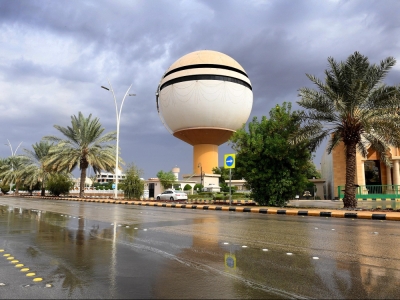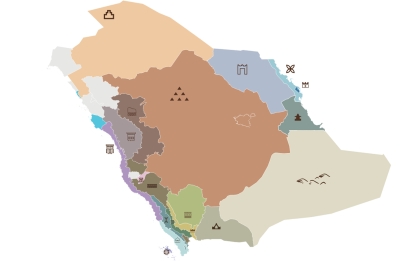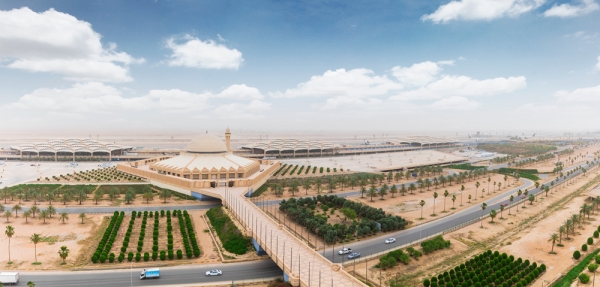
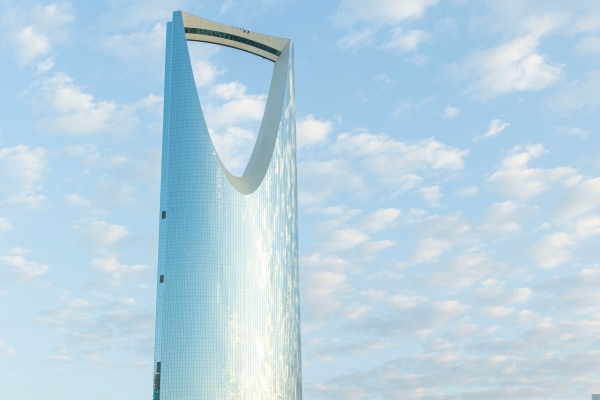

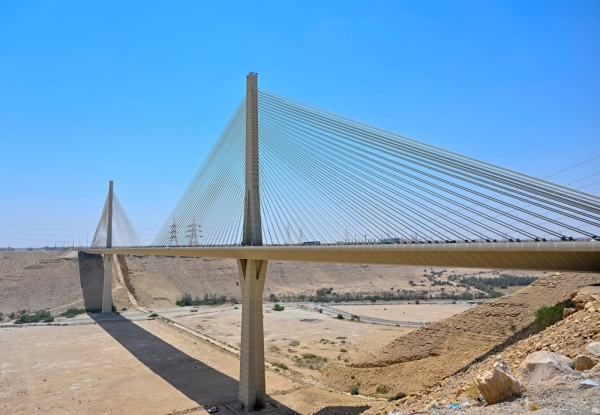
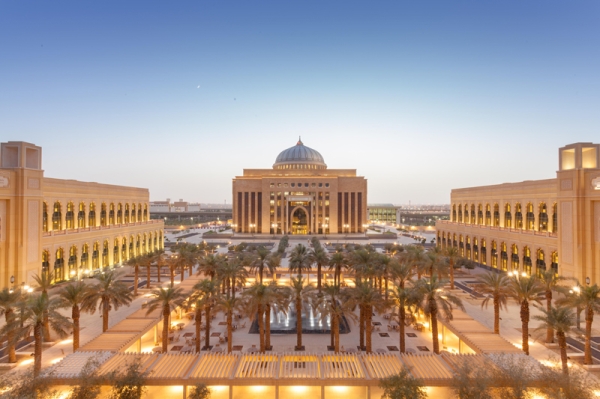
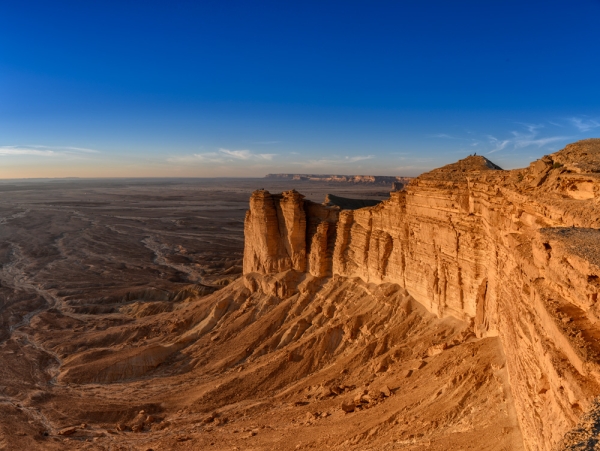

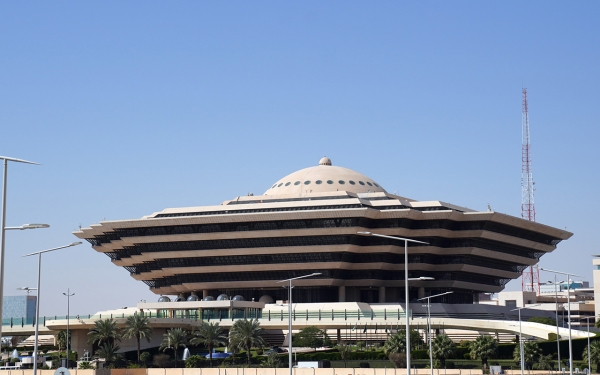
Visual icons in Riyadh City are the physical edifices that distinguish its urban identity. In the capital of the Kingdom of Saudi Arabia, these icons vary between several centers, government entities, or civil facilities, such as the building of the Ministry of Interior, the Suspension Bridge, Riyadh Water Tower, King Abdullah Financial District, and the General Court building.
Urban development in Riyadh City
Since the beginning of the third millennium, urban development in Riyadh City has taken a new turn. Rapid construction has spread across the city and in its surrounding areas, creating numerous new neighborhoods. This development has been accompanied by large-scale plans to establish various municipal projects, including modern roads, bridges, and intersections, in addition to lighting, vehicle and pedestrian tunnels, multi-level parking lots, parks, kids playgrounds, fountains, aesthetic figures, public markets, malls, and other modern facilities.
Kingdom Tower
The Kingdom Tower is one of the most prominent landmarks in the center of the capital, Riyadh. It is among the skyscrapers in the world and one of the icons that represents the Kingdom's visual identity. Inaugurated in 2002, the tower overlooks one of the most vibrant roads in the capital, King Fahd Road, which connects the northern end of Riyadh with its south. The tower can be recognized from a long distance. At the top of the tower extends the Sky Bridge, a steel structure that is sixty-five m long and weighs approximately three hundred t with a panoramic view.
Al-Faisaliah Tower
Al-Faisaliah Tower is renowned in the capital city, Riyadh, as the first skyscraper built in the Kingdom. It was inaugurated in 2000. The tower comprises thirty floors, reaching a height of 267 m. As the tower ascends, the floor space of its levels decreases. At its summit, there is a glass sphere with a diameter of twenty-four m, which is one of the exceptional architectural additions that were not in the tower's original blueprint.
al-Hukm palace
Located in the center of Riyadh City, al-Hukm palace holds a significant historical value and stands as a witness to the Kingdom's political development. It served as the seat of the ruler and a gathering place for citizens and their leaders since the reign of Imam Turki Bin Abdullah. The palace was rebuilt on its original site, spanning an area of 11,500 m.
The palace's design was inspired by the traditional features of the province's architecture, appearing as if it was composed of two parts. The southern part comprises six levels, resembling a fortress with walls and four towers at its corners, symbolizing strength and invincibility in their size, in addition to a fifth tower in the middle that provides a source of light and ventilation for the courtyards and offices located below it. Attached to the northern side of the tower is another part comprising five levels.
The exterior facades of the palace are almost solid, while its interior features a series of spaces and courtyards of varying sizes, arranged flexibly to create a sense of spaciousness.

King Khalid International Airport
King Khalid International Airport (KKIA) is one of the prominent landmarks that welcome visitors to the capital city, Riyadh. KKIA obtained the 'Most Improved Airport' award for 2022 at the Skytrax World Airport Awards, which evaluates over 550 airports and airlines globally.
Moreover, KKIA ranked twenty-ninth in Skytrax World's Top One Hundred Airports, ascending twenty-nine ranks after being ranked fifty-eighth in 2021. It also ranked third in the Top Ten airports in the Middle East. At the level of best airport staff in the Middle East, KKIA ranked third.
Princess Nourah Bint Abdulrahman University
Princess Nourah Bint Abdulrahman University is prominently situated on the KKIA Road, standing as one of the capital's most significant landmarks. Due to the university's architectural excellence, the U.S. Green Building Council (USGBC) granted the Princess Nourah University Project Leadership in Energy and Environmental Design (LEED) certificates to twelve facilities within the university campus.
The northern academic buildings, women's administration building, central library, and staff sports and recreational facilities achieved a gold rating. The main mosque, southern academic buildings, health sciences buildings, men's administration building, student sports and recreational centers, and conference center achieved a silver rating. As for the documented rating, it was obtained by hospital and research center buildings.
Al-Masmak Palace
Located at the center of Riyadh City, al-Masmak Palace is one of the historic and national landmarks. Its original name, 'al-Musammak', refers to the thickness of its walls and levels. The palace was built during the reign of Imam Abdullah Bin Faisal Bin Turki Al Saud.
Al-Masmak Palace witnessed the Battle of Riyadh, led by King Abdulaziz, and maintained some remnants of that battle. It is one of Riyadh's authentic structures, comprising a museum dedicated to the story of the unification of the Kingdom. The palace was designed to be separated into six main sections: The gate on the western side, the mosque to the left of the entrance, al-Majlis or al-Diwaniyah (council or royal court) at the facade, the well on the northeast side, towers at each of its four corners, and a courtyard surrounded by rooms with columns connected internally. Al-Masmak also encompasses three residential units. The first served as the ruler’s residence, the second was used in the past as Bayt al-Mal (treasury), and the third was dedicated to guests.
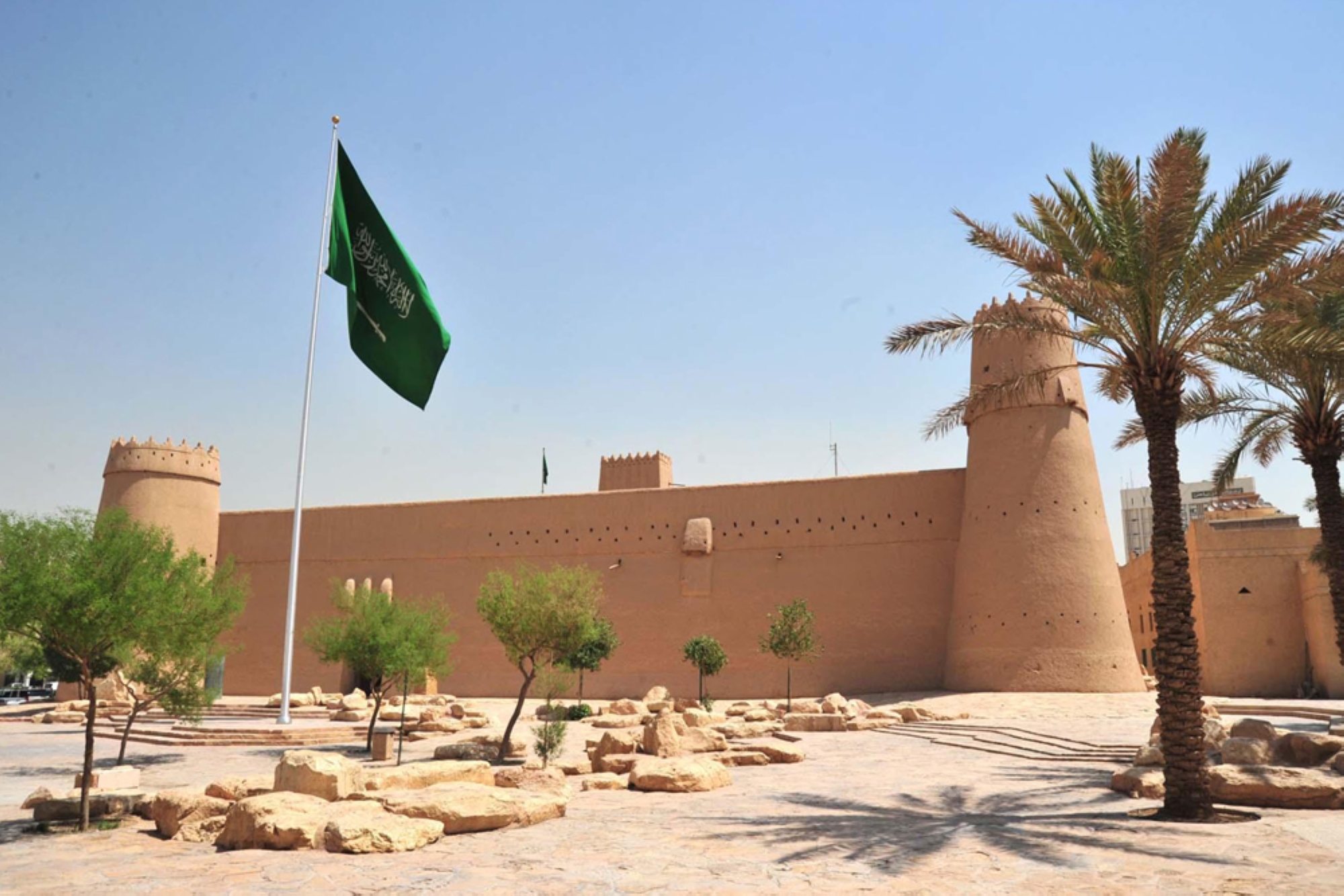
Tuwayq Mountain
Geologically, Tuwaiq Mountain has become one of the visual marvels that distinguish the Kingdom culturally in the twenty-first century, in terms of tourist, historical, and social aspects. On the interactive level, several government entities name their centers 'Tuwaiq', such as the Tuwaiq Bootcamp held by the Saudi Data and Artificial Intelligence Authority.
The Tuwayq Mountain range extends approximately eight hundred km from Nufud al-Thuwayrat Desert in al-Zulfi to the north to the outskirts of Wadi al-Dawasir and al-Rub' al-Khali (Empty Quarter) in the south. This mountain range forms a narrow limestone plateau and is a prominent geographical feature of the Arabian Peninsula, renowned as the heart of the historical Najd Region.
In 2018, the Crown Prince and Prime Minister, His Royal Highness Prince Mohammed Bin Salman Bin Abdulaziz Al Saud, compared the determination of Saudis to Tuwaiq Mountain during his speech at the Future Investment Initiative (FII). He said, "The Saudis' determination is like that of Tuwaiq Mountain, unbreakable unless it is leveled to the ground".
Suspension Bridge
The Suspension Bridge is the longest in the Kingdom. In 2000, its construction work was completed and officially inaugurated. The bridge is 763 m long and comprises three subs-columns with lengths (179 m- 405 m-179 m) respectively. It is 35.8 m wide and has two directions separated by a 5.40 m wide median. Its design was based on modern standards of bridge construction.
Riyadh Water Tower
The Riyadh Water Tower was designed by the Swedish architect Sune Lindström and was constructed by a German company in a way that impressed the capital's visitors and residents. It was built on the former 'Riyadh Casino' site to distribute water across Riyadh City. King Abdulaziz Foundation for Research and Archives (Darah) documented the tower on its fiftieth anniversary.
Historic ad-Dir'iyyah
Historic ad-Dir'iyyah in Riyadh City houses al-Turaif historic neighborhood, inscribed on the United Nations Educational, Scientific and Cultural Organization 'UNESCO' World Heritage List, Salwa Palace, and other historical landmarks, palaces, and mosques.
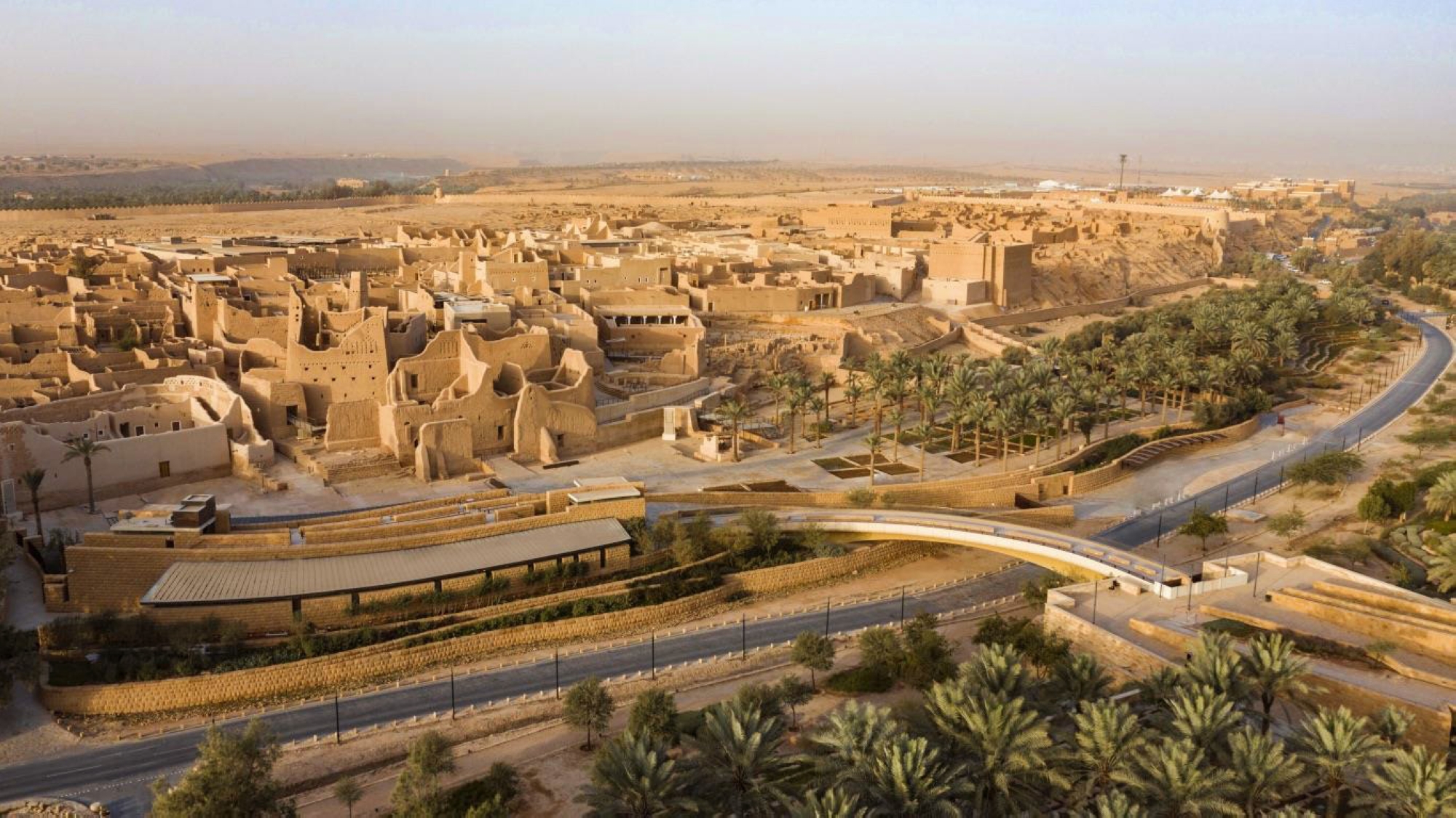
General Court
The General Court is located in al-Hukm palace area, spanning 29,893 m. Al-Madinah al-Munawwarah Street borders it to the north, al-Faryan Street to the west, and al-Sheikh Abdulatif Bin Ibrahim Al al-Sheikh Street to the east.
King Abdullah Financial District
King Abdullah Financial District is one of the prominent visual landmarks in Riyadh City. It received the LEED Platinum certification, the highest global rating in the Leadership in Energy and Environmental Design provided by USGBC.
In 2021, the district witnessed the exhibition of several interactive artworks based on light art, offering visitors windows of light creativity through eight artworks distributed throughout the center.
Ministry of Interior Building
The construction of the Ministry of Interior building was completed in 1989 as an urban landmark designed in the shape of an inverted pyramid topped with a dome.
After the Ministry of Interior was established in 1951, it was relocated to Riyadh in 1955 to settle next to the other ministries on the Airport Road before moving to its current building in 1992.
Digital City
The Digital City is located at the heart of Riyadh City, spanning eight hundred thousand m. It is a multi-use complex. The city in total forms commercial and residential spaces, stores, and smart services. It was established by Raidah Investment Company which is the investment arm of the General Organization for Social Insurance. The city is a technical zone that aims to develop and enhance the communications and technology sector. It was established according to the regulations adopted by the Saudi Authority for Industrial Cities and Technology Zones 'Modon' and fulfills its requirements for establishing technology zones. The city's launch was announced in 2009.
Related quizzes
Related articles

